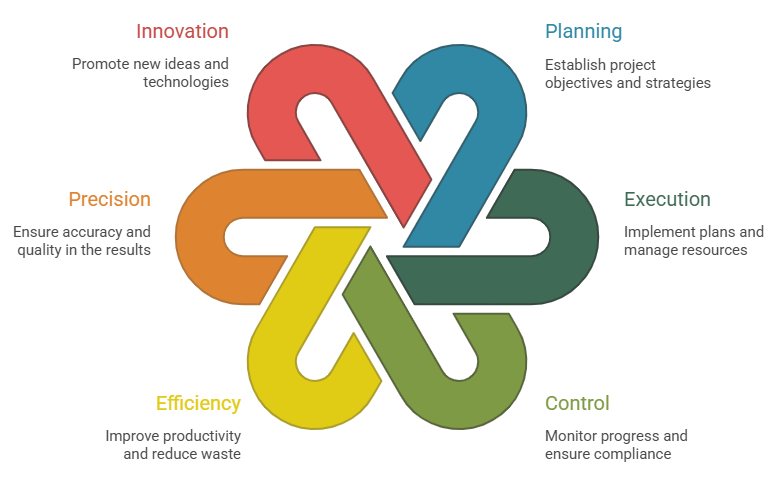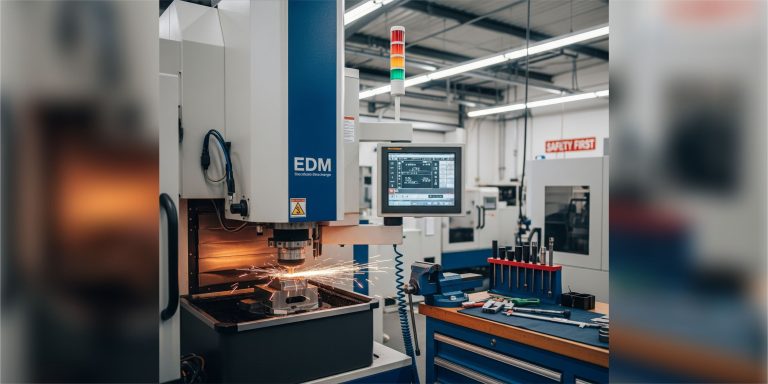In the dynamic landscape of industrial manufacturing, efficiency and precision in project execution are fundamental pillars for competitiveness and sustained success. As we move into 2025, the inherent complexity of industrial processes, coupled with the diverse challenges of the global environment, underscores the critical need to implement advanced methodologies and tools for project management optimization.
Project management optimization is not merely an operational function; it has transformed into a strategic discipline that ensures the achievement of business objectives. Its correct application is crucial to ensure that industrial projects meet established deadlines, adhere to allocated budgets, and meet the most rigorous quality standards.
This article aims to delve into best practices for project planning, execution, and control within the scope of industrial manufacturing. Our goal is to offer a comprehensive guide that allows professionals and companies to consolidate project management optimization and position themselves at the forefront of innovation and operational efficiency.

The essence of effective project management in industry
A robust and well-articulated project management optimization provides multiple tangible benefits for manufacturing companies:
– On-time and on-budget compliance: Through detailed planning and continuous monitoring, time and cost deviations are minimized, resulting in more efficient use of capital and resources.
– Quality assurance: Integrating quality controls throughout the project lifecycle ensures that the resulting products and processes meet or exceed performance expectations and industry regulations.
– Resource optimization: Intelligent allocation and monitoring of resource use (human, material, and technological) prevents waste and maximizes productivity.
– Proactive risk mitigation: Early identification of potential obstacles and the development of contingency plans allow problems to be addressed before they escalate, thereby protecting the investment and project objectives.
– Increased customer satisfaction: Delivering projects on time, within budget, and with the promised quality strengthens customer confidence and fosters lasting business relationships.
These benefits are crucial for companies seeking not only to survive but to thrive in the face of market challenges, including pressure for innovation, sustainability, and adaptability to changing markets.
Fundamental strategies for successful industrial projects
The implementation of the following best practices is essential to transforming project management optimization into a strategic advantage:
Comprehensive strategic planning
The planning phase is the foundation upon which the entire project is built. Poor planning is one of the main causes of failure in industrial projects. The key here is meticulous project management optimization from the ground up.
– Clear definition of objectives (SMART).
– Stakeholder identification and analysis.
– Work breakdown structure (WBS).
– Rigorous time and resource estimation.
– Risk analysis and management.
– Defining roles and responsibilities.
Planning should integrate data-driven predictive analytics to anticipate market trends, supply chain disruptions, and other external factors, enabling greater resilience.
Efficient and adaptive execution
The execution phase involves implementing the plan and proactively managing operations. This is where project management optimization comes into play.
– Optimal task allocation.
– Continuous monitoring and control.
– Proactive problem management.
– Formalized change management.
Efficient execution greatly benefits from robotic process automation (RPA) and artificial intelligence (AI) for monitoring and early anomaly detection, which contributes significantly to project management optimization.
Rigorous control and strategic closure
The control phase assesses project performance, while closure ensures that lessons learned are capitalized on. This is a crucial step in project management optimization.
– Regular quality audits.
– Project performance evaluation.
– Formal project closure.
Digital Tools
In today’s Industry 4.0 environment, digital tools are essential enablers for efficient project management optimization. These solutions not only automate repetitive tasks but also provide unprecedented visibility, improve collaboration, and facilitate data-driven decision-making.
Collaborative project management software
– Asana, Monday.com, Jira, Smartsheet: These platforms enable task planning, responsibility assignment, real-time progress tracking, schedule management, and centralized document collaboration.
– Microsoft Project: An industry standard for detailed project planning, resource management, and critical path analysis, suitable for large-scale projects.
Unified communication platforms
– Slack, Microsoft Teams, Google Workspace: These tools integrate chat, video calling, file sharing, and document management, facilitating instant communication and synchronous collaboration among distributed teams.
Enterprise resource planning (ERP) systems
– SAP S/4HANA, Oracle NetSuite, Microsoft Dynamics 365: ERP systems are the backbone of operational management in manufacturing. They integrate and centralize data from production, inventory, finance, supply chain, sales, and human resources, providing a holistic view of the business.
Industry 4.0 technologies (IoT, AI, Data Analytics)
– Internet of Things (IoT): The implementation of sensors on machinery and production lines enables the collection of real-time data on performance, efficiency, equipment status, and product quality.
– Artificial Intelligence (AI) and Machine Learning (ML): AI can optimize production scheduling, predict equipment failures, analyze large volumes of data to identify patterns, and optimize quality processes.
– Business Intelligence (BI) and Data Analysis Tools (Power BI, Tableau): These tools allow raw data to be transformed into strategic information through interactive dashboards and customizable reports, which facilitate evidence-based decision-making.
Effective communication
Regardless of the methodology or tools used, effective communication is the lubricant that keeps the machinery of project management optimization in the industry running. Given the diversity of disciplines and roles involved, clarity and transparency in communication are essential to avoid misunderstandings, duplication, and delays.
– Establishing clear communication channels: Defining which channels will be used for different types of information ensures an organized flow of information.
– Scheduled and efficient meetings: Regular meetings should have a clear agenda, a facilitator, and minutes that document decisions and agreements.
– Rigorous documentation: Keeping a comprehensive record of all decisions, changes, risks, and lessons learned is crucial.
– Two-way feedback: Fostering an environment where all team members feel comfortable expressing ideas, concerns, or proposing improvements is vital.
– Transparency and visibility: Sharing project status, obstacles, and successes with all relevant stakeholders promotes trust and alignment.
Tracking key performance indicators (KPIs)
To control and optimize project management, it is essential to establish and monitor a set of key performance indicators (KPIs). These metrics provide an objective view of project progress, health, and performance, enabling informed and timely decision-making.
Schedule KPIs
– Schedule variance (SV): Measures the difference between planned work and actual work completed.
– Schedule performance index (SPI): Relates earned value to planned value (SV/PV). An SPI less than 1.0 indicates a delay.
– Percentage complete: The actual progress of the project compared to the planned total.
Cost KPIs
– Cost variance (CV): The difference between actual cost and earned value.
– Cost performance index (CPI): Relates earned value to actual cost (EV/AC).
– Cumulative expense vs. budget: Tracks total expenses to date compared to the cumulative budget.
Quality KPIs
– Number of defects per unit: Direct measure of product quality.
– Rework rate: Percentage of products that require reprocessing.
– Standards compliance: Level of compliance with quality regulations and customer requirements.
Resource KPIs
– Resource utilization: Percentage of time that resources (personnel, machinery) are being used productively.
– Material availability: Efficiency in the supply chain to ensure the availability of inputs.
Risk KPIs
– Number of active risks: Number of identified risks that have not yet been mitigated.
– Impact of realized risks: Cost or time lost due to risks that materialized.
The implementation of interactive dashboards, powered by real-time data from ERP systems, IoT, and project management software, allows project managers and senior management to efficiently monitor these KPIs and take corrective actions in a timely manner.
Frequently asked questions
AI can provide predictive analytics for resource planning, early detection of risks and bottlenecks, and optimization of production scheduling. This enables project managers to make more informed and proactive decisions.
In addition to meeting deadlines and budgets, project success is measured by customer satisfaction, the quality of the final product, operational efficiency achieved, and the generation of value for the company.
Use visual tools such as flowcharts and Kanban boards to detect slowness and overload at specific stages, implementing corrective actions quickly.
Final words
Optimizing project management in industrial manufacturing is not just a discipline, but a business strategy that defines an organization’s ability to innovate, compete, and thrive in an increasingly demanding global market. It is essential that each initiative be approached with a proactive and sophisticated approach to planning, execution, and control. Integrating advanced digital tools, fostering effective communication, and rigorously monitoring key performance indicators are non-negotiable elements for any company aspiring to operational excellence.
Mastering these practices allows not only to mitigate risks and avoid delays, but also to optimize resource allocation, ensure product quality, and ultimately strengthen customer relationships through consistent, high-value deliveries. This is the path to building more resilient, adaptable, and innovative manufacturing.
At PBI Solutions, we fully trust our clients’ ability to overcome any challenge, which is why we provide comprehensive solutions and specialized advice that support them at every stage of their journey toward excellence.
Together, we can build the future your business deserves.




